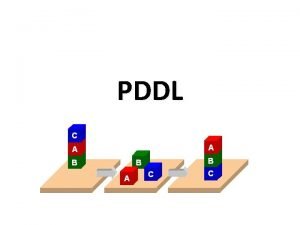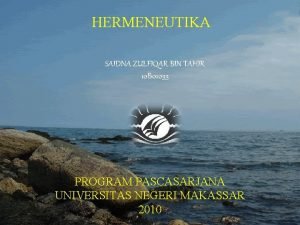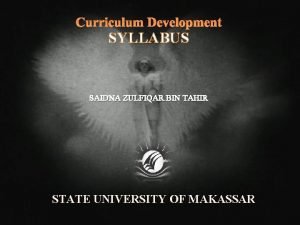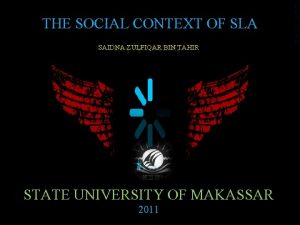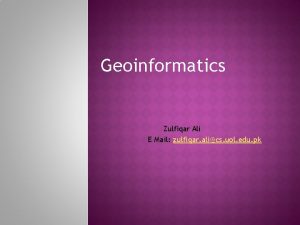TOWARD A DEFINITION OF LANGUAGE PLANNING Saidna Zulfiqar








- Slides: 8

TOWARD A DEFINITION OF LANGUAGE PLANNING Saidna Zulfiqar bin Tahir STATE UNIVERSITY OF MAKASSAR 2011

TERMINOLOGY TYPES OF LANGUAGE PLANNING STRATEGY LANGUAGE FORMATION THE ROLE OF THE MASS MEDIA

TERMINOLOGY Hall (1951: 15) uses glottopolitics to refer to the application of linguistic science to government policy for determining the best means of achieving bilingualism in colonial areas, and other areas, where two or more cultures are in contact. Springer (1956: 46, 54) use language engineering with reference to the efforts of graphization and of standardization of the semi-standardized language. Alisjahbana (1961) writes about language engineering as the conscious guidance of language development within the larger context of social, cultural, and technological change. He also (1972: 14) uses the term to mean the transfer of past experiences of codification of the European Languages – in the areas of spelling, vocabulary, and grammar – the newly developing languages by deliberate and rational planning.

TYPES OF LANGUAGE PLANNING Status planning is the allocation or reallocation of a language or variety to functional domains within a society, thus affecting the status, or standing, of a language. Language status is a concept distinct from, though intertwined with, language prestige and language function. Strictly speaking, language status is the position or standing of a language vis -à-vis other languages. A language garners status according to the fulfillment of four attributes, described in the same year, 1968, by two different authors, Heinz Kloss and William Stewart. Both Kloss and Stewart stipulated four qualities of a language that determine its status. The origin, degree of standardization, juridical status, and vitality dictate a language’s status.

LANGUAGE PLANNING STRATEGY Decision on strategy may affect other aspect of planning for languages planning, as well as language codification planning and even languages policy planning. For the newly emerging nation, the language planning objectives is the spread and use of a supradialectal norm throught a multylingual population. Again from an operational and ideal perspective, the determination is made, in a technical sense, as to the best sequence of operations for the achievement of that supradialectical norm. Thereafter, this technical solution is reviewed in light of managerial considerations (such as time, resources, and money), of other relevant plans of national development (such as manpower resources requirements [harbison 1967]), of sociocultural conditions (such as the attitude of different languages communities toward the indigenous and foreign languages, and a myriad of others factors), and in light of the exigencies of the situation.

LANGUAGE FORMATION Ferguson (1968) identifies three components; namely, graphizations (the reduction of a language to writing), modernization (the expansion of vocabulary and the development of forms of discourse), and standardization (“the process of one variety of a language becoming widely accepted throught the speech community as a supradialectical norm – the ‘best’ form of the language – rated above regional and social dialects, although these may be felt appropriate in some domains” [1968: 31]). Ray (1963: 70), discussing the process of standardization, writes that its operation consists basically of creating a model for imitation and of promoting this model over rival model. His model of imitations is twofold, including a body of spoken and of written discourse directed to listeners and speakers respectively.

THE ROLE OF THE MASS MEDIA The media play a far more influential role in language formation than is usually acknowledged. Ferguson (1968: 32) writers, two important models of discourse are the news and features stories of the press and radio (Kloss, 1952: 2431). In the post area, the media are out less for the formally approved codification and they provide the population with models of imitation of prestigious spoken and printed usage. Garvin (1972) comments that the European pattern of achieving standardization through literacy and education may be by –passed to a significant degree, in some of the newly emerging nations, through the use of oral mass communications.

THANKS!!! SEE YOU NEXT SEMESTER GUYS


